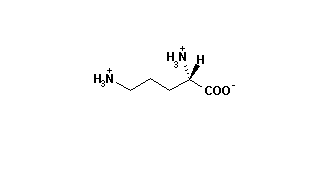Cordero, M.1; Nino-Vega, G.2; San-Bias, G.1
1Instituto Venezolano de Investigaciones Cientificas (IVIC) - Laboratorio de Micologia; 2,3Instituto Venezolano de Investigaciones Cientificas - Centro de Microbiologia y Biología Celular
Introduction: In P. brasiliensis, growth of the pathogenic yeastlike (Y) phase and transition from the mycelial (M) to the Y phase are accompanied by an increase in polyamines levels and ODC activity (Arch. Microbiol. 165: 311-316, 1996; ibid 166: 411-413, 1997). Northern analysis of the PbrODC gene does not correlate with such increment in activity, showing a constant expression during Y growth and through transition either way, pointing to a post-translational regulation of ODC (Yeast 21: 211-218, 2004). In some fungi and in mammalian cells, a feedback system post-translationally regulates antizyme activity (Rev. Iberoamer. Micol. 20:1 -5, 2003). In it, low levels of ODC (and polyamines) give place to an inactive antizyme by a frameshifting of its transcript. When the levels of ODC (and polyamines) rise, the antizyme transcript is made in frame, giving as a result an active antizyme protein that leads to the degradation of ODC protein. When the levels of ODC (and polyamines) decrease, the antizyme transcript suffers a frame shift, thereby inactivating the antizyme and restarting the cycle, through a self-regulatory mechanism. Methods: Southern analysis on P. brasiliensis DNA was done using as radiolabeled probe a PCR fragment of 330 bp of the P. brasiliensis antizyme gene (PbrAzODC). From the Southern analysis, a HindIIII genomic library was constructed, that was screened by colony hybridization, in order to get the whole gene sequence. The polyadenylation site has been identified by the 3'RACE system (Invitrogen, CA), using as specific primers, sequences derived from the PCR product. Expression of the gene was followed by Northern analyses in the Y and M phases, as well as during the dimorphic switch from M to Y. As loading control, a fragment of the PbrrRNA 18S gene was used. Results: From Southern analysis, a single 2.9 Kb signal was detected for DNA restricted with HindIII, and this enzyme was chosen for the construction of a genomic library. Northern analysis showed a higher expression of PhrAzODC in the Y pathogenic phase when compared with the M phase, and a rise in signal intensity for samples into the dimorphic transition from M to Y. Conclusions: Both the higher expression of the PbrAzODC gene in the pathogenic Y phase than in the saprophytic M phase, and the rise in expression when an M culture changes into a Y culture, correlates with the higher ODC activity found when P. brasiliensis presents the Y morphology. The presence of an antizyme-like protein together with the above results, allow us to postulate that, like in some fungi and in mammalian cells, regulation of ODC in P. brasiliensis might be antizyme-controlled.
Copyright Instituto de Medicina Tropical de Sao Paulo Oct 2005
Provided by ProQuest Information and Learning Company. All rights Reserved



